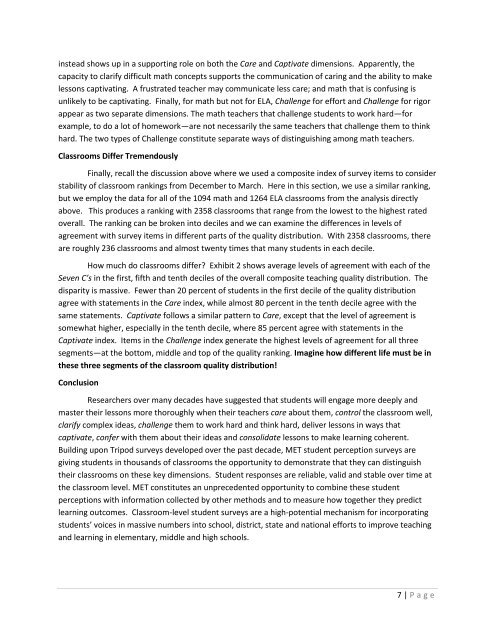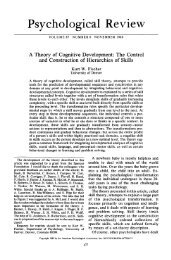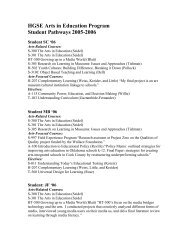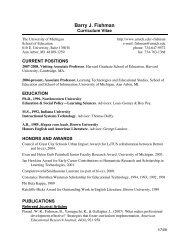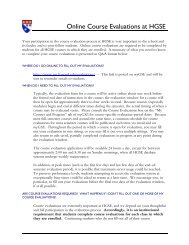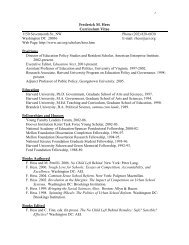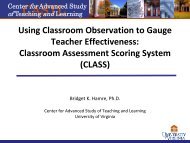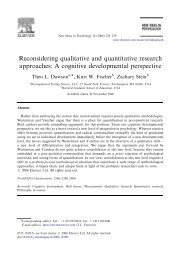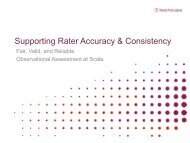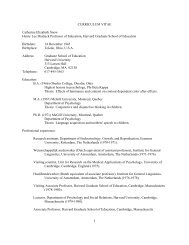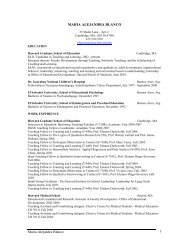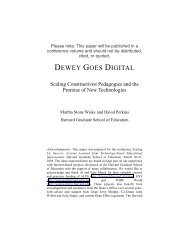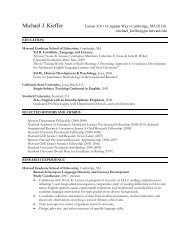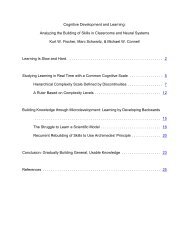Student Perceptions of Teaching Effectiveness - Harvard Graduate ...
Student Perceptions of Teaching Effectiveness - Harvard Graduate ...
Student Perceptions of Teaching Effectiveness - Harvard Graduate ...
Create successful ePaper yourself
Turn your PDF publications into a flip-book with our unique Google optimized e-Paper software.
instead shows up in a supporting role on both the Care and Captivate dimensions. Apparently, the<br />
capacity to clarify difficult math concepts supports the communication <strong>of</strong> caring and the ability to make<br />
lessons captivating. A frustrated teacher may communicate less care; and math that is confusing is<br />
unlikely to be captivating. Finally, for math but not for ELA, Challenge for effort and Challenge for rigor<br />
appear as two separate dimensions. The math teachers that challenge students to work hard—for<br />
example, to do a lot <strong>of</strong> homework—are not necessarily the same teachers that challenge them to think<br />
hard. The two types <strong>of</strong> Challenge constitute separate ways <strong>of</strong> distinguishing among math teachers.<br />
Classrooms Differ Tremendously<br />
Finally, recall the discussion above where we used a composite index <strong>of</strong> survey items to consider<br />
stability <strong>of</strong> classroom rankings from December to March. Here in this section, we use a similar ranking,<br />
but we employ the data for all <strong>of</strong> the 1094 math and 1264 ELA classrooms from the analysis directly<br />
above. This produces a ranking with 2358 classrooms that range from the lowest to the highest rated<br />
overall. The ranking can be broken into deciles and we can examine the differences in levels <strong>of</strong><br />
agreement with survey items in different parts <strong>of</strong> the quality distribution. With 2358 classrooms, there<br />
are roughly 236 classrooms and almost twenty times that many students in each decile.<br />
How much do classrooms differ? Exhibit 2 shows average levels <strong>of</strong> agreement with each <strong>of</strong> the<br />
Seven C’s in the first, fifth and tenth deciles <strong>of</strong> the overall composite teaching quality distribution. The<br />
disparity is massive. Fewer than 20 percent <strong>of</strong> students in the first decile <strong>of</strong> the quality distribution<br />
agree with statements in the Care index, while almost 80 percent in the tenth decile agree with the<br />
same statements. Captivate follows a similar pattern to Care, except that the level <strong>of</strong> agreement is<br />
somewhat higher, especially in the tenth decile, where 85 percent agree with statements in the<br />
Captivate index. Items in the Challenge index generate the highest levels <strong>of</strong> agreement for all three<br />
segments—at the bottom, middle and top <strong>of</strong> the quality ranking. Imagine how different life must be in<br />
these three segments <strong>of</strong> the classroom quality distribution!<br />
Conclusion<br />
Researchers over many decades have suggested that students will engage more deeply and<br />
master their lessons more thoroughly when their teachers care about them, control the classroom well,<br />
clarify complex ideas, challenge them to work hard and think hard, deliver lessons in ways that<br />
captivate, confer with them about their ideas and consolidate lessons to make learning coherent.<br />
Building upon Tripod surveys developed over the past decade, MET student perception surveys are<br />
giving students in thousands <strong>of</strong> classrooms the opportunity to demonstrate that they can distinguish<br />
their classrooms on these key dimensions. <strong>Student</strong> responses are reliable, valid and stable over time at<br />
the classroom level. MET constitutes an unprecedented opportunity to combine these student<br />
perceptions with information collected by other methods and to measure how together they predict<br />
learning outcomes. Classroom-level student surveys are a high-potential mechanism for incorporating<br />
students’ voices in massive numbers into school, district, state and national efforts to improve teaching<br />
and learning in elementary, middle and high schools.<br />
7 | P a g e


